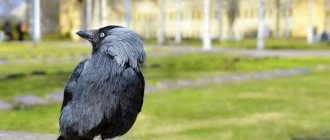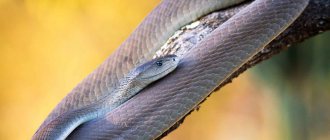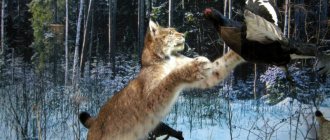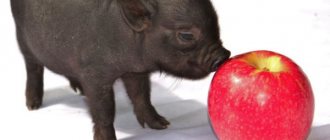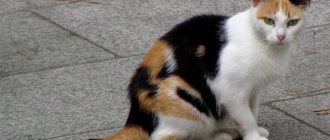Description and features
When it comes to the cormorant bird, the association “bird-fisher” immediately comes to mind for many! Indeed, we can say that cormorants rightfully deserve this unspoken nickname. They won it with dignity and confidence thanks to their colossal fishing skills.
The cormorant bird belongs to the cormorant family and belongs to seabirds. There are varieties of cormorants: crested, little black cormorant , great and many others.
In Latin the name of the bird is written as "Phalacrocorax". The sizes of cormorants vary. Some are similar in size, for example, to the merganser from the duck family; others will be larger. In any case, the length of the birds' bodies varies approximately from half a meter to one.
Some fly quickly, in a straight path. If they have to take off from the water surface, they run up and accelerate. The wingspan of cormorants can reach over one and a half meters. On average, the indicators fit into frames from eighty to one hundred and sixty centimeters.
The appearance of the cormorant varies. In color, adult cormorants are mostly dark: black, black and white (with a predominance of black), brownish, etc. It can be difficult to distinguish a male cormorant from a female due to the fact that they look very similar. Anyone can verify this by looking at what the cormorant in the photo .
Ornithologists who study birds of this genus are well aware of the insufficiently expressed visual differences between female and male birds; in their work and research activities they often encounter real individuals. As you know, with visual examples, learning any material is easier!
The sea cormorant has a long, hooked beak without nostrils. The paws contain membranes. The cormorant lives preferably in marine areas, but can also live on lakes.
Types of cormorants
There are various genera of cormorants (including small cormorants), and birds are also classified by species. There are only about forty species. Among them are the Indian, crested cormorant, great, small spotted cormorant, Bering, Galapagos, eared cormorant and others. Let's look at some of them in more detail.
The Indian cormorant, for example, is one of the smallest cormorant species. Lives on the Indochina Peninsula, o. Sri Lanka; its home is also India, Pakistan, etc. It feeds on fish. To get food for itself, it skillfully and deftly dives, briskly pursuing prey right under water.
The adult Crested Cormorant is a medium-sized black bird, approximately seventy centimeters long, with a graceful, pointed beak about five to six centimeters in length. The crested cormorant is great at diving and swims expertly.
But it doesn't fly very well. The flight looks difficult and does not last long. Like other cormorants, it eats fish. It prefers to catch it near the bottom. So in the distant expanses of the sea, under which there are impressive layers of water and the bottom is “too low”, you will not find it.
The great cormorant (also known as Black Sea cormorant , as some call it, in connection with one of the bird’s habitats) happily settles down on rocky surfaces. Birds love to spend time together and often gather together in fairly large numbers.
Cormorants of this species like to hunt cooperatively, finding fish in the sea and then “driving” them to shallower areas. The parental behavior of birds is interesting: representatives of both sexes take care of incubating the eggs: both females and males!
It’s unusual to think that a “father cormorant” can sit in a nest for warming eggs instead of a “mother.” Nevertheless, this is what happens. One of the most unique representatives of the cormorant is the white-breasted cormorant . The plumage of the chest is light, white or grayish. The bird is called one of the rarest species of cormorants.
The adult Bering cormorant is a "metallic black" bird with a crest of longer feathers on its head. Lives in Kamchatka, Chukotka, North America and other places. It flies well, even over impressive distances (it goes to open sea waters to fish), but on land it looks clumsy.
The Galapagos cormorant is special among its kind. Unlike others, it does not fly due to its extremely short wings! It looks somewhat like a duck. Despite its “disadvantage” in terms of flying abilities, the Galapagos cormorant swims excellently.
Life in a pack and “marriage alliances”
Cormorants prefer to create large, even huge colonies, sometimes containing hundreds of thousands of birds, along with other marine animals and birds such as fur seals and penguins.
It is believed that these birds are monogamous, creating a union, they live with their “chosen one” (“chosen one”) throughout their lives. They build nests from branches and grass in bushes, rocks, trees, and even directly on a flat surface.
In spring (only warm) females lay eggs (2-5 pieces). The female and the male hatch them in turn; both parents also perform the duties of feeding the chicks: while one sits in the nest with the “children,” the other gets food, and vice versa.
In hot weather, both parents hunt only in the morning and evening , and during the day they sit in the nest and cover the chicks from the scorching sun with their wings. To make it easier for the brood to endure the heat, cormorants bring wet algae to the nest.
Newborn chicks are helpless and hairless; their first plumage appears only after 30-80 days (depending on the variety). But even grown chicks continue to live with their parents , who continue to feed them. They leave their father's house only after they start their own family. The timing of puberty also depends on the species and ranges from 2 to 4 years.
Lifestyle and habitat
The cormorant is a supporter of active life during the daytime. What is the daytime part of their life like? The cormorant bird most of its day near or on the water, searching for food for its family and itself.
They show agility in catching fish, which is not surprising, because otherwise the catch would be meager or there would be none at all. Nevertheless, it is impossible not to emphasize its speed and maneuverability in the expanses of water - the bird is truly worthy of admiration.
Some species of cormorants fly to warmer climes for the winter; these are the majority. A smaller part remains in their native latitudes and leads a sedentary lifestyle. Some birds combine both characteristics, being both sedentary and partly migratory. For example, the red-faced cormorant.
Speaking about the characteristics of cormorants, I would like to emphasize again that they are quite sociable birds. They like to settle and set up nesting sites in large “groups”. Sometimes such a “society on the rock” includes only representatives of the cormorants themselves. At other times, there are also other birds present there, for example, seagulls, without which it is probably difficult to imagine any coastline.
It is interesting that the image of a cormorant appeared on various objects of art, culture, etc., for example, postage stamps, postcards, envelopes. Clothes with the image of a cormorant look impressive and unusual: T-shirts, dresses, etc.
Range, habitats
If we talk about which country is the homeland or main refuge for cormorants, it is difficult to answer this question. They inhabit almost the entire globe, including they can be found on the territory of the Russian Federation. Sea coasts do not frighten cormorants either with scorching heat or piercing cold. Our country is currently home to as many as six species, among which the Great Cormorant is considered the most common.
This is interesting! The bird is also distributed throughout Australia, with the exception of wet coastal mangroves and tropical forests. Also inhabits the Lesser Sunda Islands.
Return to content
Nutrition
A little about the nutrition of cormorants was discussed above, let’s look at the issue in more detail. The main “component” of the daily diet is, of course, medium-sized and also small-sized fish. Birds of this family welcome sardines, herring, and do not refuse capelin and others.
Despite the fact that cormorants feed on fish, it is not the only type of food for the family. They can eat crustaceans, starfish, etc. Some even eat frogs and snakes, turtles, and insects.
But let's get back to the fish. After fishing, which, as is known, is carried out by vigorously diving under water, cormorants have to spend some time on land: the shore, rocks or stones, so that their wings can dry.
The cormorant can often be seen in exactly this position, this is how the bird dries its feathers
Looking at bird nutrition more specifically, the following can be noted. Great cormorant , for example, dives for fish no deeper than four meters. The flight distance to which it “dares” to get food in the sea does not exceed on average fifty kilometers when viewed from land.
The fish that large cormorants usually choose are about a couple of tens of centimeters in length. Birds hunt while afloat, initially positioning themselves on the surface of the water and carefully concentrating on the search. Then they make a sharp jerk down. They hit the fish sharply on the side, grab it with the beak, and then remove it from the water.
The crested cormorant , by comparison, can dive much deeper for the desired prey than the great one! The crested cormorant (also called the long-nosed cormorant) can dive forty meters or even more.
It eats gobies, cod, eels, herring, etc., depending on its habitat. Apart from fish, he doesn’t particularly like anything, except that, as an exception, he may pay attention to a crustacean or mollusk.
Eared cormorants are precisely those who, if something happens, will not mind profiting from amphibians or crustaceans. They may eat insects. However, the preferred type of food for them, of course, remains fish. To obtain food, they choose shallower water areas, up to eight meters deep. They don’t want to go further than five kilometers deep into the sea.
Mutilated cormorant chicks are still dying on the island
An ornithologist and I noticed two mutilated cormorants on the island
It was the ornithologist Vitaly Koshcheev, a week ago, who discovered crippled cormorant chicks on an island in Lake Lukomlskoye, whose upper beaks were cut off by unknown persons (read HERE).
“It all started so positively: we came to track the number of egrets, we banded them, and in three hours we banded 111 birds,” recalls Vitaly. — The next day I called my friend to film a video, and at the same time I had to catch 5 cormorant chicks for the Vitebsk Zoo. We hid in the reeds with a camera and filmed the herons. And then I went to catch cormorants for the zoo. I caught a chick - and its beak was cut off... Then more and more chicks without beaks began to come across - I realized that the birds were mutilated en masse. And specifically chicks, since it is extremely difficult to catch and mutilate an adult bird.
Ornithologist Vitaly Koshcheev suggested that the monsters cut the upper beaks of the chicks with a knife
To get to the cormorants, you have to survive... the rain of fish
Vitaly said that cormorants appeared on the island relatively recently, somewhere in the 80s, and began nesting en masse in the 90s. And, as it turned out, it’s not so easy not to get to them.
The boat ride to the island is about three hundred meters. However, the short distance did not calm me down: the lake was stormy. Rocking violently on the waves and tightly clutching a bag with expensive photographic equipment, Vitaly and I finally made it to the island. A line of gray birds left the trees and landed on the water.
“You see, the cormorants have already noticed us.” The adult birds flew away, only the chicks remained in the nests, which had not yet fledged, the ornithologist noted.
The island itself is wild, overgrown with reeds and nettles taller than a man. As soon as we stood ashore, we immediately felt the pungent smell of rotten fish, the remains of which were almost everywhere.
“The cormorant’s daily need for fish is 400 g. They mainly feed on a non-commercial species of fish - bleak, but sometimes they come across mirror carp, crucian carp, perch,” the ornithologist explained, pointing to small fish that every now and then came across underfoot.
“Look, there’s a nest of a gray heron over there,” Vitaly drew my attention.
Indeed, in a low nest, three funny gray fluffies with yellow eyes and wind-ruffled heads are patiently waiting for their mother, the gray heron. Before I had time to take a couple of shots of bird happiness, something flew behind me and plopped down on the ground.
“Oh, I forgot to warn you,” Vitaly turned around. “Try not to walk under the nests: cormorant chicks regurgitate fish...
The spectacle, to put it mildly, is not very good, especially considering the fact that the chicks, sensing danger, began to bombard us with fish in earnest.
Gray heron chicks turned out to be very funny babies
Cormorant chicks look out for their parents with food
There are still chicks with their beaks cut off on the island.
While I was trying to somehow escape from the fish and other (birds are still flying overhead) bombing, Vitaly had already managed to go forward and return with a cormorant chick... without the upper beak. The dark gray chick with blue eyes full of horror simply froze in his hands. There is dried blood on the upper beak, and on the lower beak there are traces of a knife cut. It was not difficult to catch this one - the bird was so weak.
“There is no doubt that his beak was cut off with a knife, and not, say, with a garden pruner,” Vitaly noted. “It feels like they put the chick on something and cut it, like cutting bread, in one movement and thus hooked the lower beak. It’s even hard to imagine that one person could do this.
Before we had time to release the chick into the wild, we noticed another one on a branch - it also did not have an upper beak. The chick, clinging to a branch with its paws, looked hopefully towards the lake, where, out of habit, it was waiting for its mother with a shiny fish in its beak...
There is now a “Komsomolskaya Pravda” cormorant on the island
We have seen for ourselves that it is not so easy to catch and hold a cormorant chick alone. Vitaly suggested ringing one chick (we decided that it would be ours, “Komsomol’s”). There was no question that I could calmly stand and film the entire process. Vitaly climbed a tree and tried to push one chick onto the grass, and I had to catch it.
“The cormorants tumble out of the nest like parrots,” noted the ornithologist from the tree. - You just catch him right away, otherwise he will run away into the reeds - look for him later!
No such luck! Pushing the chick out of the nest was not an easy thing. Only Vitaly pushed him, and he was about to somersault, but no! - he bent his neck with a hook and hung on it on a branch, floundering with his paws. And when the chick finally fell, he jumped into the nettles so much that I barely managed to catch him. I picked it up and his heart was pounding, it seemed like it was going to jump out. They ringed the baby in a couple of minutes: they hung a ring with the number 39 on his paw.
- How can we get him back?
- And now we’ll play basketball with the cormorant! – either jokingly or seriously, said Vitaly, and began to climb the tree again. – Serve it here! - he shouted from the branch.
Vitaly took my cormorant pass masterfully, then, as if he had a ball instead of a chick, he began aiming at the nest - and threw it. The baby almost reached the “basket”, but managed to catch the edge of the nest with its neck-hook, pulled itself up, worked with its paws, and a moment later was sitting with its brother or sister in the nest.
Now Komsomolskaya Pravda has its own cormorant.
“They couldn’t do that!”
We had no doubt that the incident with the chicks had spread not only throughout the media, but also in the local area.
“Yes, they are monsters, those who did this,” said local resident Ivan, worried. “They need to cut off their legs up to the knee for this.” They couldn’t do this on their own. This is someone from the city (meaning nearby Chashniki - Author) and only because of the money. After all, if a bird bothered them, they could take a stick and simply kill it, but they cut off the beaks to get money!
“Oh, I’ve never seen that bird, but they say that it spoils a lot of fish, eats five kilos a day,” said the shepherd. - And they also say that there are a lot of them there, so if there are a little less of them, then it’s okay, they’re not in the Red Book.
- But it’s not the same way to destroy...
“What does she need to do there...” the shepherd just narrowed his eyes and didn’t answer anything else.
We left the island with a heavy heart.
Seeing that we had sailed far enough from the island, a flock of cormorants took off from the water and rushed home to their babies...
Island on Lake Lukoml where cormorant chicks were mutilated
OFFICIALLY
“We can’t talk about any suspect yet.”
“Today, 28 mutilated cormorants have been disposed of, 6 of them were caught and euthanized, and the rest died of starvation by natural causes,” Yuri Chernousov, head of the Chashniksky District Inspectorate of Natural Resources and Environmental Protection, told Komsomolskaya Pravda . – Until the end of the week, we will go to this island every day, together with the inspection of flora and fauna, and monitor the situation. After all, the birds, while they are strong, fly away from the island and it is difficult to catch them all at once.
“It is known that so far only one suspect from the Chashniksky district has been found. Could one person cope with three dozen cormorants?
- If there was a desire... Although the police department should answer these questions.
“We are now conducting an investigation into this fact,” Mikhail Dyadichkin, head of the Chashniksky District Department of Internal Affairs, told KP. – And we cannot talk about any suspect yet, since the investigation is ongoing.
— There was information in the media that this was a local resident who mutilated the birds because they prevented him from fishing?
“The police could not provide such information, because we must objectively weigh and check everything, and then only give an assessment. The Investigative Committee will make a decision after the inspection is carried out.
Reproduction
Cormorants are thoroughly preparing to replenish their family. Nests are carefully prepared, which are made from twigs, etc. cormorant nest is usually located on the branches of a tree, but sometimes they can be found in reeds and other places.
Chicks mature and grow in eggs on average for twenty to thirty days. Considering that the female cormorant does not lay all the eggs at once, but one at a time, it is easy to understand why the hatched, “newly arrived” birds, being equally smooth, without feathers, and defenseless, are so different in size!
Speaking about the reproduction of cormorants more specifically, let us give an example with the Indian cormorant. This bird usually lays three, four or more eggs (the number can reach up to six). The chicks are born naked, without feathers. Later, fluff grows on them, then feathers appear.
The Bering cormorant chooses protective, secluded places for nesting, such as crevices and cracks in rocks, and others. The nests are large and spacious. As a rule, it lays three or four eggs, but there are other, less common cases when there may be a different number of eggs in the clutch: less, more.
As in the case of the Indian species of cormorant, the offspring are born completely devoid of any plumage, even down. Only after some time do the babies acquire their first “clothes” of gray color.
Reproduction and parental behavior
The great cormorant is a monogamous, colonial bird. The locations of nesting colonies may not change for centuries, and the same nests are used for many years. Since the nests are repaired and adjusted every year, sometimes they look like pyramids 1 m high. But this applies only to nests on the ground, since nests on trees are less durable (under the influence of caustic droppings, nesting trees dry out and break). The cormorant's nest is a pile of branches, grass, algae, held together by bird droppings. Both parents build the nest, but the male usually carries the building material.
Nesting begins in March - May. Cormorants arrive at nesting sites in pairs and in breeding plumage. Mating games are accompanied by ritual poses, special body movements, and duet calls. A full clutch of great cormorants contains 5–6 greenish eggs; incubation lasts 23–29 days. Both parents incubate alternately, starting with the laying of the first egg, so the chicks in the nest are of different ages. They hatch blind and naked. Their eyes open on the 3rd–4th day, and at the age of 2 weeks the chicks are covered with thick dark down. At the same age, tubes of flight and tail feathers begin to appear.
In the first days, parents feed the chicks by regurgitating semi-digested fish, which they bring in a throat pouch, and at the age of 1.5 weeks, the chicks can already swallow whole fish. When feeding, the parent, with a characteristic muffled cry, sits on the edge of the nest, and, taking the chick's head into its mouth, regurgitates the food. During one flight, the parents try to feed all the chicks, but the older ones often push the younger ones aside and receive a double portion.
At the age of 7 weeks, the chicks leave the nest and deftly climb tree branches in the colony or roam the ground. The chicks become completely independent at 12–13 weeks. Great cormorants become sexually mature at the age of 3 years.
The main enemies of nesting cormorants are large gulls and hooded crows, which destroy nests and steal eggs.
Lifespan
The lifespan of cormorants can vary. On average, in the wild, cormorants can live up to about eighteen years or a little more. At the same time, if we take a specific type of cormorant, for example, the eared cormorant, then in natural conditions it lives on average about six years.
An interesting custom involving the cormorant bird
Nowadays, some cormorants are known to live in zoos. This is one of the types of “communication” between a modern cormorant and a person. Previously, cormorants were also in “communication” with people. Only then the “interaction” looked different.
They say that in the old days there was such a custom as fishing with cormorants. This method has its roots in the distant past, its age is more than a thousand years. The method was used in countries such as China and Japan, as well as in European countries.
What was cormorant fishing like in general terms? The cormorant , known since ancient times for its fishing skills, caught fish not for itself, but for people! The man learned to “use” his skill to his advantage. It happened approximately as follows.
The bird was tamed over a period of time (about fourteen days on average). It should be noted that this process was very productive, the cormorants quickly got used to “their man,” and then “cooperation” began.
The bird was released onto the surface of the water, it began to hunt. After the dive, she swam up with the prey. But it was one thing to catch a fish, and another thing to make sure that the bird did not immediately eat the catch.
A method was invented for this: a special ring was put on the cormorant’s neck. The bird could move, fly, swim, of course, breathe and even drink. One thing: the bird could not eat. The caught fish did not pass through the “ringed throat”. But what was so difficult about chewing the prey and swallowing it piece by piece? – The answer is simple: cormorants don’t do that, they eat whole fish.
However, from time to time the birds received “their share”, since they could still swallow small fish. Plus, to encourage and maintain the “fighting spirit” of their feathered comrades, the fishermen also gave the birds small fish, thus fulfilling their “part of cooperation.”
What you need to know about cormorants
As of 2021, most of the communication between humans and cormorants involves people protecting the birds in special reserves or regulating their numbers so that experienced fishermen do not eat all the inhabitants of the sea.
There are non-obvious ways to use cormorants. In a number of regions, people watch birds of prey and recognize fishing spots. Possessing excellent vision, a predator from the air will find tasty prey and tell a person where it is best to fish.
Cormorants trust people. Practice shows that a bird can be easily trained and on average it takes 14 days. The cormorant is then used as a live fishing rod or as a circus performer. However, the cormorant is less suitable for circus acts. The bird is not particularly graceful, and can perform basic tricks only near water while fishing.
The air inside the plumage gives the bird special benefits. It is thanks to him that the cormorant floats perfectly on the water and looks like an unsinkable float. This same feature causes the cormorant to dry its wings for a long time after hunting.
Cormorants in slang
Previously, inexperienced thieves were called cormorants, but now the word has moved from the narrow “thieves’” theme into a wider sphere of use, beginning to mean a narrow-minded, awkward person. The one who is not responsible for his words, the one who has the wind in his head, only chatter on his mind. In a word, someone rather “empty” and stupid.
In contrast to this negative image, a real cormorant , which is a bird, on the contrary, as is already clear from the above, is distinguished by its special intelligence and dexterity. The cormorant bird family is diverse, and each species has something of its own, individual. A distinctive feature, characteristic, skill - in a word, something that makes him unique in his own way.
The list of species and names could go on for a long time; studying this “section” of ornithology is fascinating and informative. One can only be amazed at how amazing the surrounding nature is, the living world created in all its diversity and, at the same time, uniqueness.
